Before heading into the main photo analysis, Mark did have quite a few observations of the 808, which you may find interesting:
- Good news! The 808 battery lasts a minimum of two days - three days at a push, which is almost a day longer than my 19 month-old N8 on original battery.
- First impressions are very favourable - the 808 feels like a super N8 on steroids. Daylight and close range flash results are fantastic.
- The start up time of the 808 camera is much faster than the N8 - and the shooting time is much quicker, too. 808 does shots seemingly effortlessly, whereas the N8 seems to be working really hard each time. The N8 shutter noise is also much louder than the 808's.
- Sound quality in video capture is superb - almost feels like you are there, in terms of low frequency response and stereo effect.
- One shocking thing was that when I got the phone home and started downloading the new Maps Suite I got a 'low memory' warning. Did a quick check and found that my 808 had loads and loans of Chinese social apps installed, as well as the 379MB Asphalt Adrenaline 6.0 racing game, all installed on the C drive! I only had 10Mb left and was left mid-install. I removed a load of this bloatware and was rewarded with an incomplete Maps install. No weather widget! When I told the Nokia flagship store about it they said it's true that the 808 did indeed have a 'relatively small internal memory' - don't they train these people?! Hopefully buyers in other countries won't have this bloatware issue.
- I got the hard case for the phone, with lens cap. It completely covers the speaker grille but the sound is, surprisingly, still alright. Just a bit muffled in the high frequencies. Not such a downer! The case is made of a grippy, stealth-like plastic. The lens cap needs to be firmly pressed all round to click home, but even then, it can fall off from time to time as it goes in and out of your pocket.
- The 808's screen rotation is a lot more sensitive than that of the stable N8 - the 808 often does a quick rotate when unlocking with the lock button or on-screen unlock. Slightly annoying, but I'm sure that will be sorted out in a firmware update.
- The gallery view on the 808 only shows in portrait mode, whereas the N8 goes to landscape when you rotate the phone.
- Call quality on the 808 is clear and strong. Perhaps slightly louder at the earpiece than with the N8.
- The 808 feels less 'delicate' and ornate than the N8, giving a feeling of rock-solid solidity and reliability. I like it!
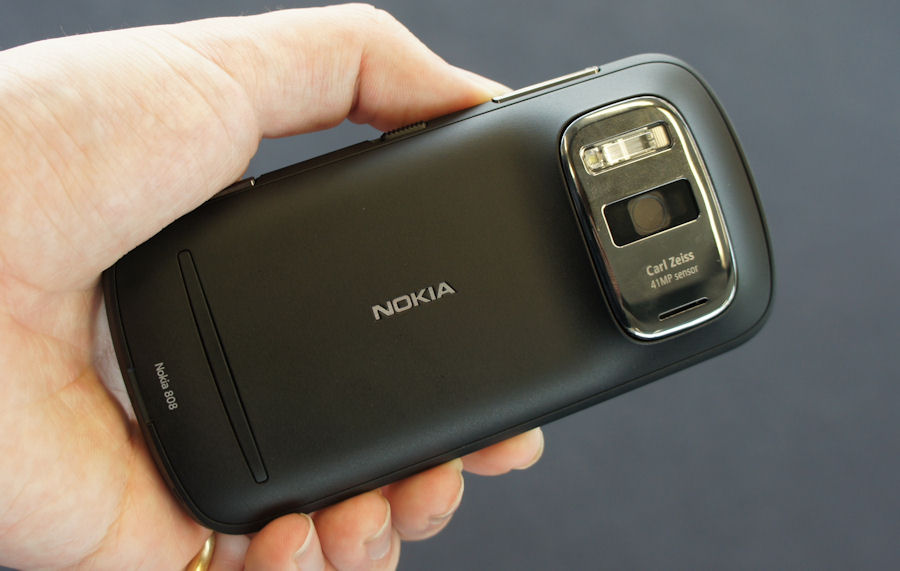
But onto the main content of this feature. How much better is the Nokia 808 PureView than the N8 in terms of still photos? The two year old N8 still rules the smartphone world in terms of results from its camera, whether in bright sunlight or dingy party lighting. And now Nokia claim the 808 PureView takes smartphone photography to a whole new level. But how much better is it? Is it worth upgrading if you already own an N8? Let's find out.
Note that in all N8 comparisons below, it was in default '9MP 16:9' mode, to match the default aspect ratio of the 808 PureView.
Test 1: Bright sunlight, unambitious subject
Let's start with a situation where the 808 won't be pushed at all. In fact, its default 5 megapixel mode will probably be bettered by the detail brought out by the slightly higher resolution being used on the N8. In full sun, there's no need whatsoever for the PureView oversampling. Note that zoom also wasn't allowed here (see later in this piece for that), one way in which the PureView could have resolved more detail. Another way would be to use the full sensor resolution, of course, in the somewhat geeky 'Creative' mode.
Here's the Nokia 808's photo, click it to enlarge or download the full size (PureView 5MP) version:
And, having shot the same scene on the N8 as well, here's the central portion of the image from each, 808 on top, N8 on the bottom:
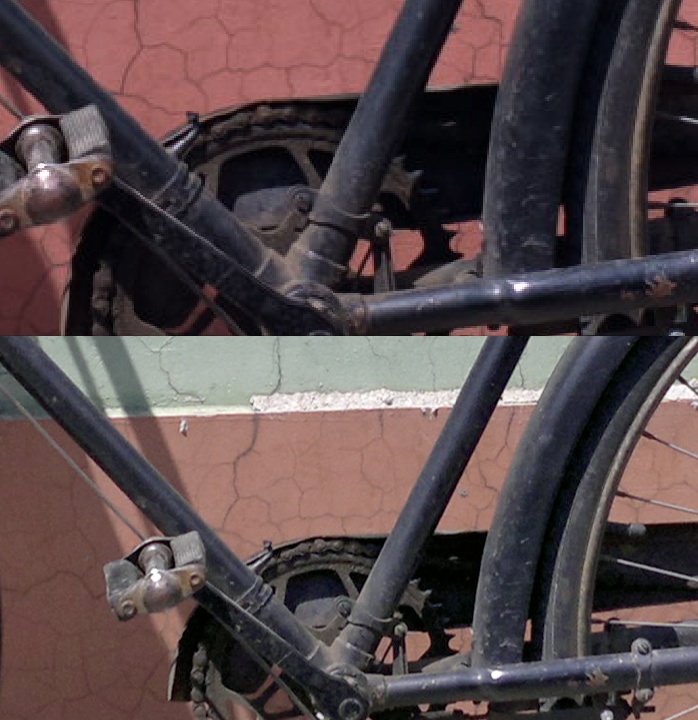
As expected, under these light-rich, undemanding circumstances, the 808 in default mode actually lags slightly behind the established N8, which is able to resolve more detail without compromise.
Test 2: Bright sunlight, static subject, PureView zoom allowed
What's the point in having that PureView zoom technology if you don't use it, though? So take a similar static subject in sunlight, but this time let the 808 PureView zoom work its magic, zooming in on the graffiti on the wall. Here's the Nokia 808's PureView-zoomed in photo, click it to enlarge or download the full size (5MP) version:
And, having shot the same scene on the N8 as well, here's the central portion of the image from each, 808 on top, N8 on the bottom:
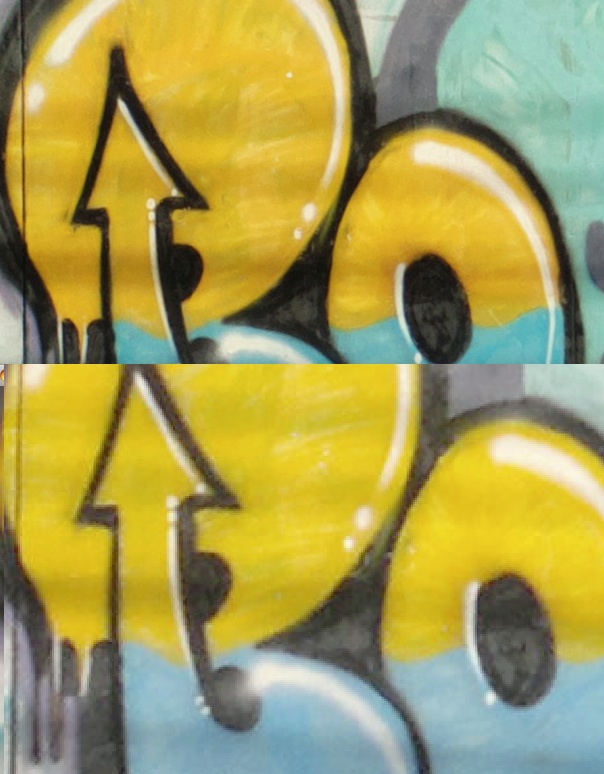
A dramatic difference already. The (at first sight) poor crop from the N8 looks surprising, but remember that we're cropping in a lot here, i.e. cropping in on the 808's already-zoomed image - the equivalent crop on the N8 image is severe. The PureView zoom is absolutely working as advertised.
Test 3: Bright sunlight, static subject, PureView zoom allowed (take 2)
But let's prove that last test shot wasn't a fluke. We'll do it again, this time on a yard scene, with a handy sign that can be zoomed in/cropped in on. Here's the Nokia 808's PureView-zoomed in photo, click it to enlarge or download the full size (5MP) version:
And, having shot the same scene on the N8 as well, here's the central portion of the image from each, 808 on top, N8 on the bottom:
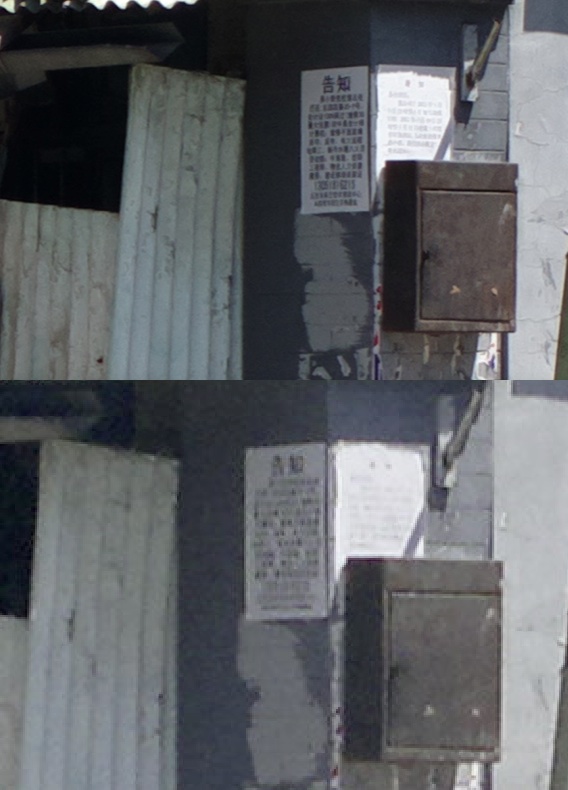
Again, the difference is clear. The use of PureView zoom allows much more resolved detail in the subect than is possible from the N8's slightly larger resolution. In addition, blocks of colour/shade are far more consistent and with far fewer digital artefacts.
Test 4: Low light, night, some artificial light from a street lamp, no flash
This is where the other 'PureView' advantage, the pixel over-sampling, should really come into play, along with the much larger sensor. Here's the Nokia 808's photo, click it to enlarge or download the full size (PureView 5MP) version:
Pretty good - and remember this was without any Xenon flash. And, having shot the same scene on the N8 as well, here's the central portion of the image from each, 808 on top, N8 on the bottom:
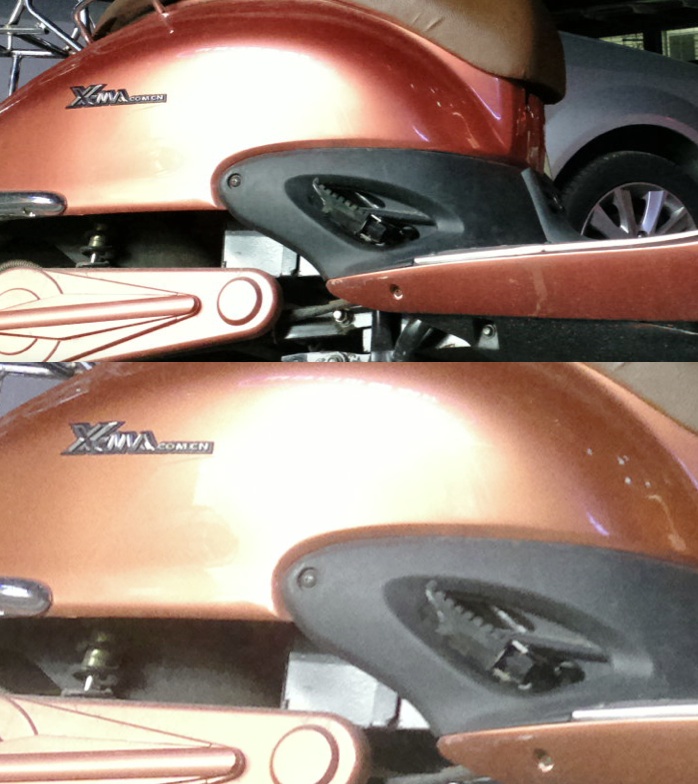
Wow. All of a sudden the N8 is made is look utterly ordinary. The 808's image has more detail, more contrast, better colour and lower digital noise. Hugely impressive.
Test 5: Indoors, Xenon flash allowed
Some natural light as well, but close enough that the phone Xenon flash can be usefully employed. Here's the Nokia 808's photo, click it to enlarge or download the full size (PureView 5MP) version:
And, having shot exactly the same scene on the N8 as well, here's the central portion of the image from each (text always makes for an excellent comparison point, since our eyes are readily accustomed to spotting how clear letters are, e.g. on signs), 808 on top, N8 on the bottom:
The difference here is even more dramatic. The N8's large sensor and Xenon flash are utterly out performed by the even larger sensor and the more powerful Xenon flash of the 808! And with a dramatic reduction in sensor noise, thanks to the 'PureView' oversampling. In terms of colour, the N8 also interpreted the book as 'orange', which it's not....
Test 6: Indoors, no flash allowed
Let's take the difference in Xenon flash strength out of the equation. Looking even more specifically at raw light gathering ability in low indoor light, here's the Nokia 808's photo, click it to enlarge or download the full size (PureView 5MP) version:
And, having shot the same scene on the N8 as well, here's the central portion of the image from each, 808 on top, N8 on the bottom:
With no flash available, even the 808 put in some orange into the photo, erroneously. And there are some artefacts, almost 'water-colour-esque'. But the N8 photo, in this extremely low light situation, is far worse in terms of text legibility and colour accuracy. Of special note is that the text is far coarser and more smudged in the N8 version, despite the fact that its image was captured at 9 megapixels rather than 5, again showing the efficacy of the Nokia 808 system.
Verdict
Although the above detailed comparison makes the Nokia N8 camera look rather appalling(!), remember that everything's relative. The 'old' N8 itself outshines every other smartphone camera on the market already, even including 2012 models. That the 808 manages to make many of the N8's results look terrible is just more confirmation of how much of a leap forward the 808 PureView tech is and of the gap between the two phones.
We'll have some more original N8 vs 808 comparisons in the coming weeks and months, when retail 808 hardware hit the UK.
_________________________________
More Nokia 808 photo samples
Of general interest, here are some more 'PureView' images at the 808's default 5 megapixel setting, with comments as appropriate. In each case, click through for the full version:
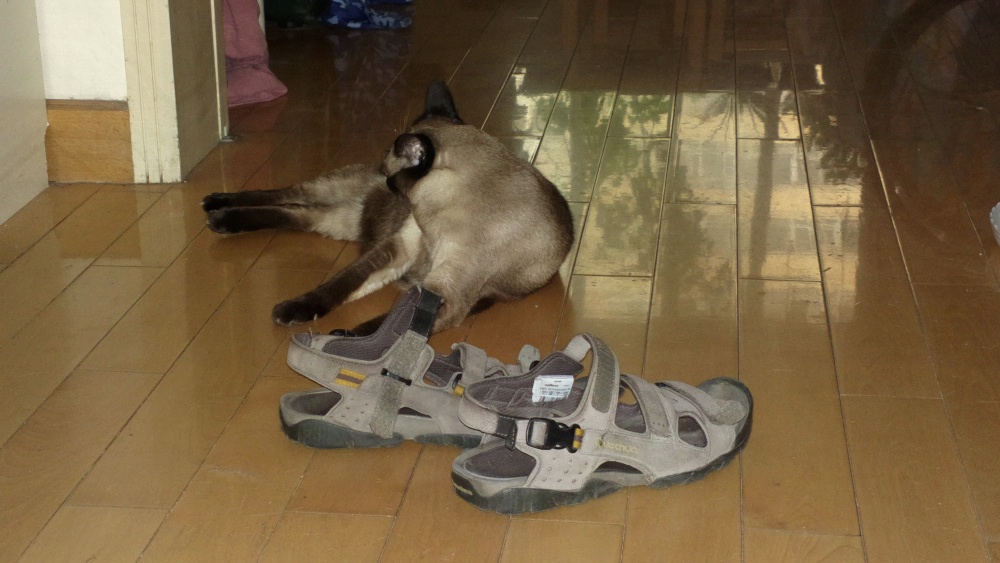 Stunningly clear Xenon flash example - plus cute cat for Rafe to admire(!)
Stunningly clear Xenon flash example - plus cute cat for Rafe to admire(!)
Trying out a pure Xenon flash shot in ultra-macro circumstances. Look at the detail on the glass!
__________________
Thanks to Mark Wilkinson for all the hard work taking the photos, I think we've proved fairly dramatically that Nokia's PureView technology in the Symbian-powered 808 is definitely not a gimmick. The average user will take snaps with default settings, will enjoy zooming in and out, under all light conditions, and will - simply - get better photos every single time.
Which is a resounding result for all concerned.
Watch this space for our own Nokia 808 PureView review coverage when retail units finally hit the UK.
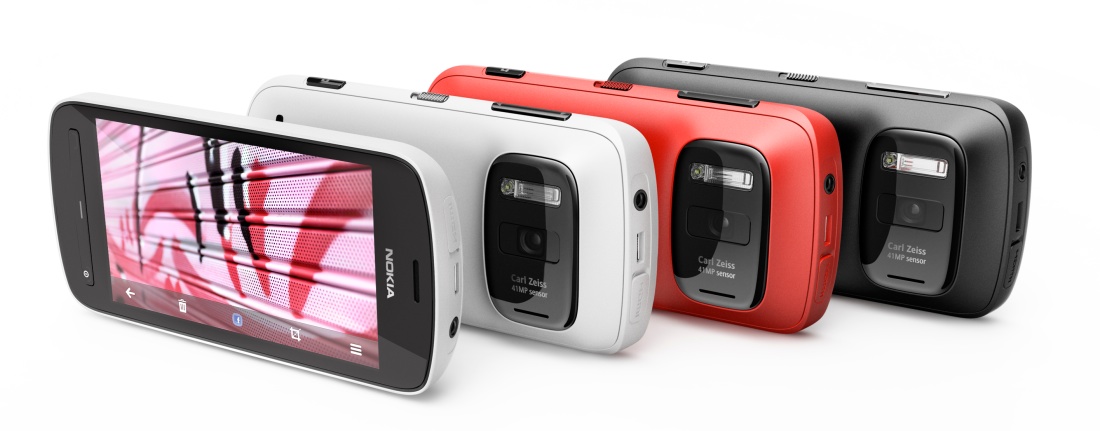
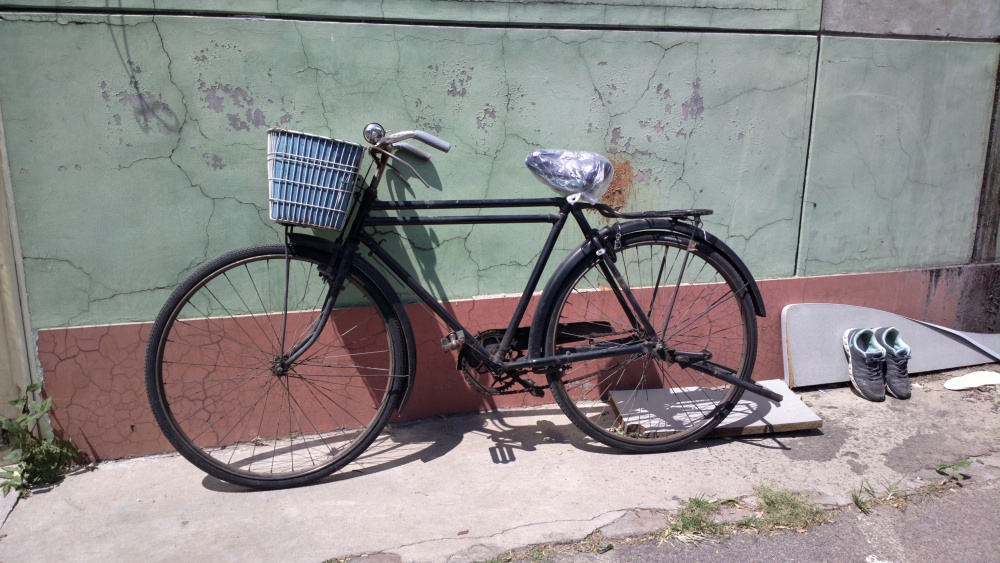
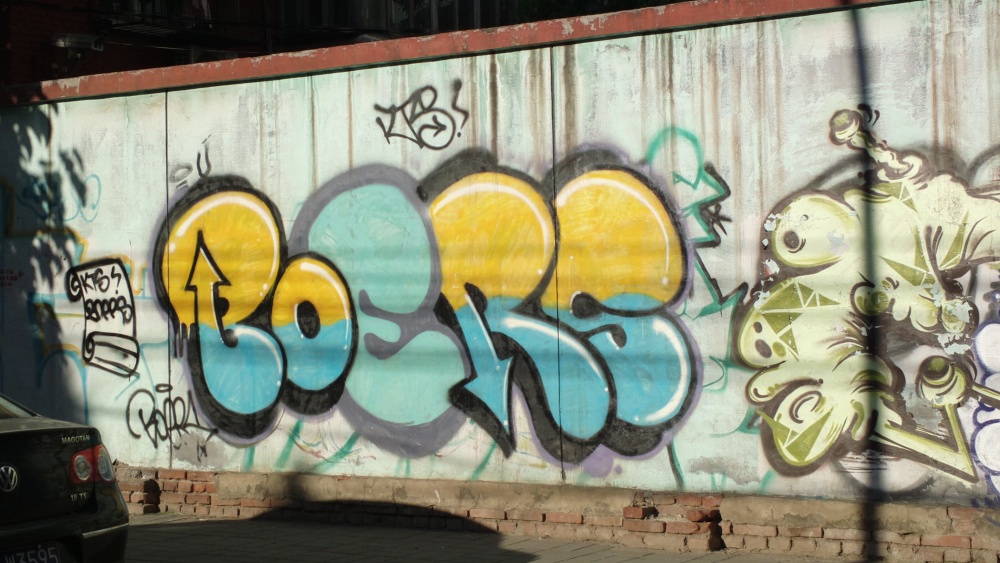
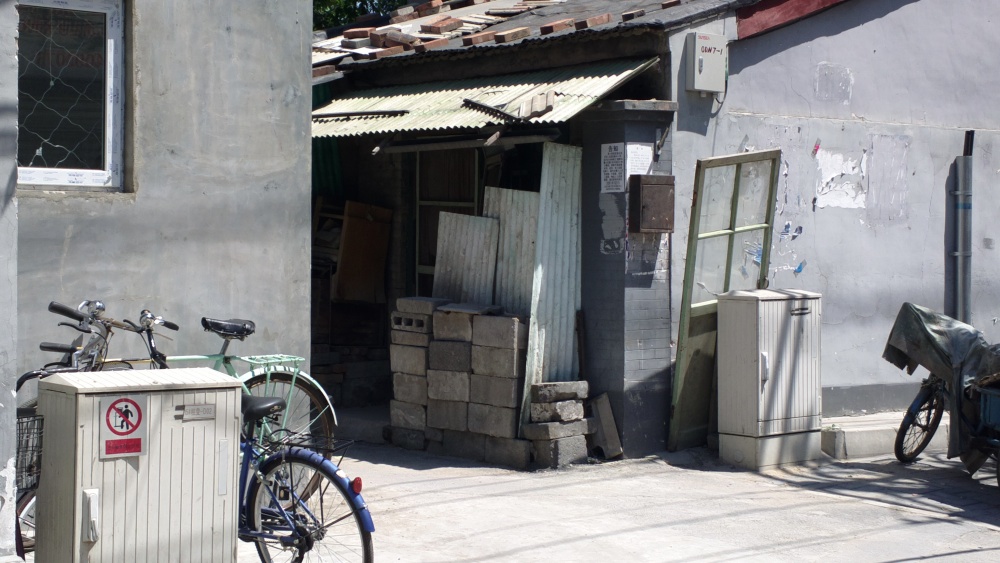
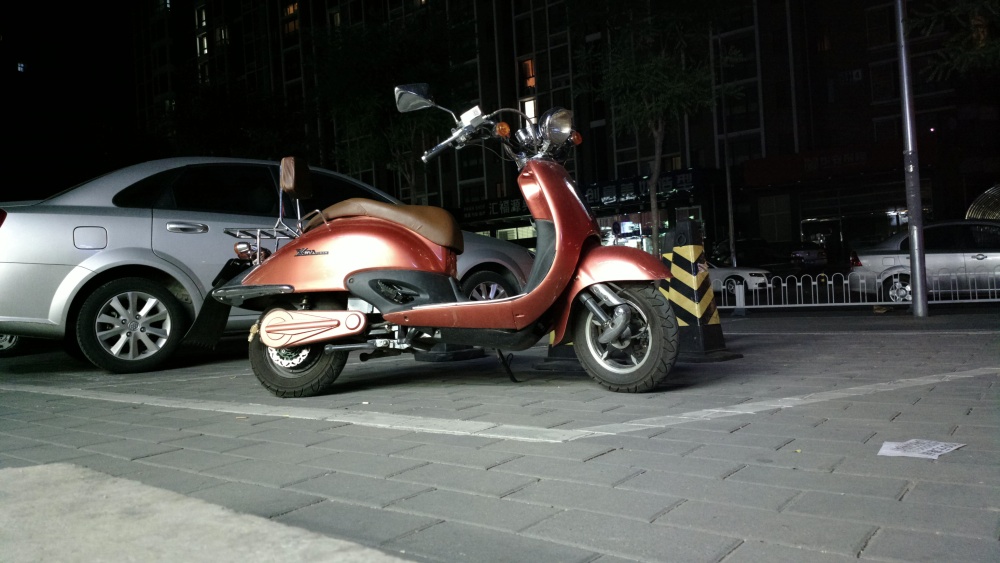
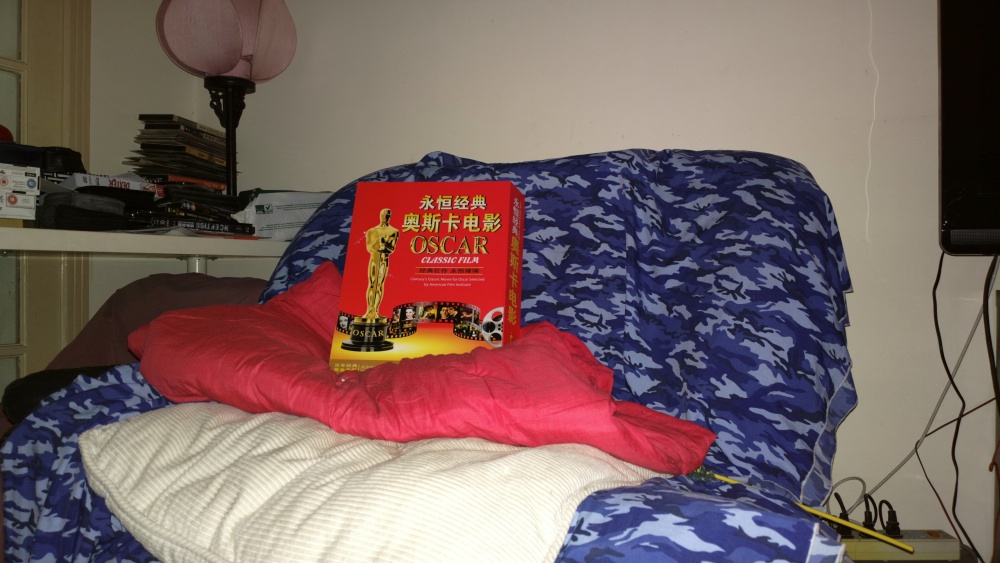
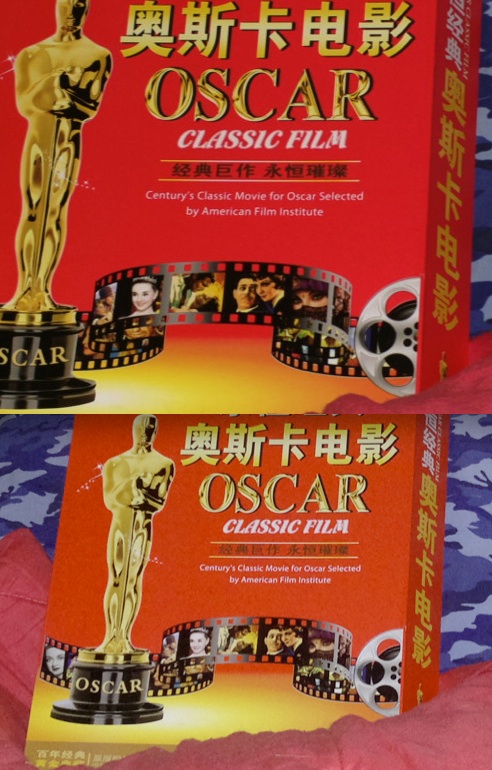
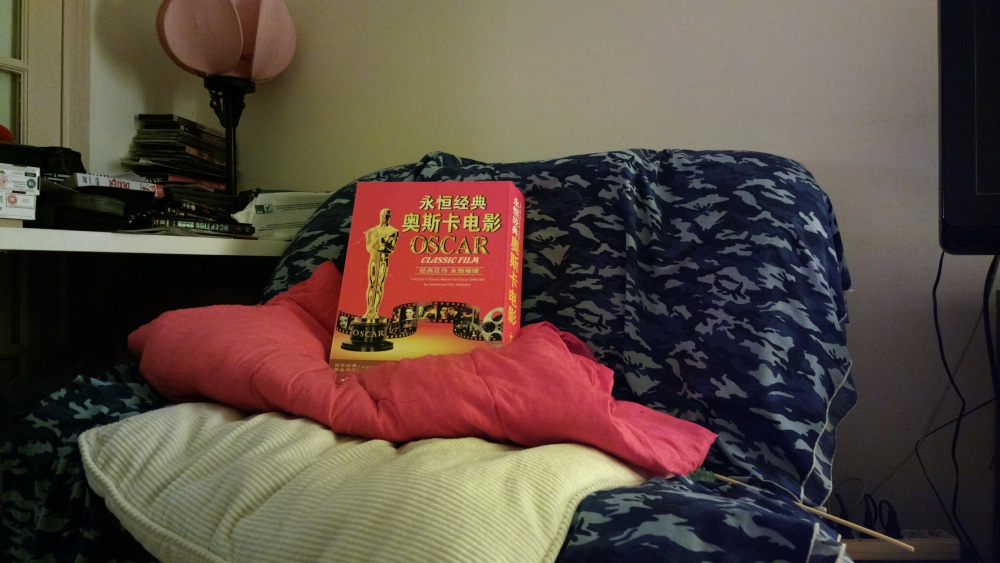
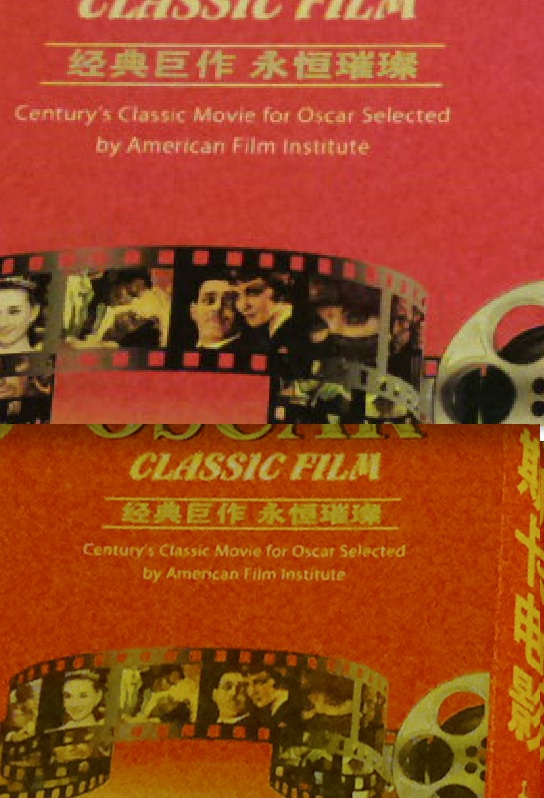
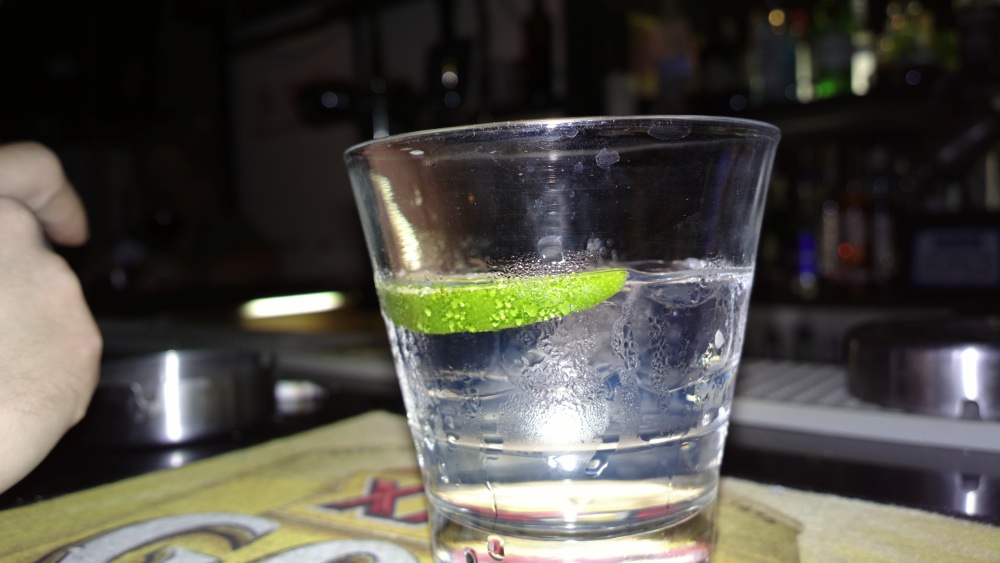
No hay comentarios:
Publicar un comentario